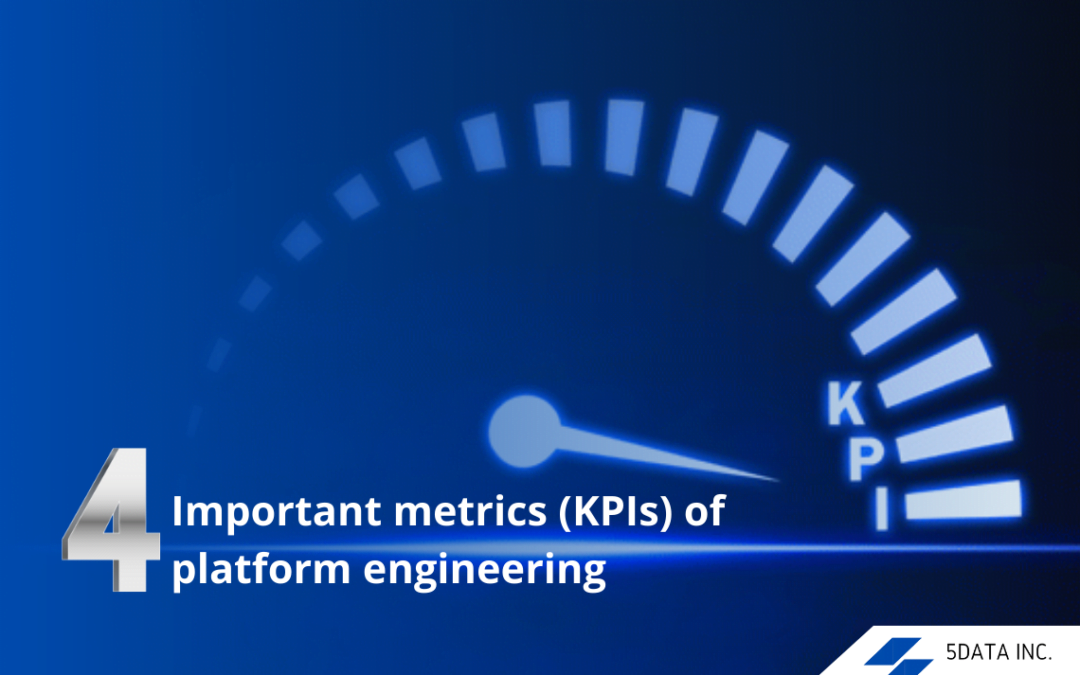From a business perspective, this is exactly what KPIs do for your company.
KPIs Or Key Performance Indicators always place your business one step ahead of your competition.
So what exactly is KPI?
How does it benefit Platform Engineering?
If it does, what are the key KPI metrics for Platform Engineering?
Let’s find out.
Understanding Engineering KPIs
Engineering KPI – a clearly defined quantifiable metric used in multiple niches within the engineering industry to gauge the efficiency of projects over time.
Simply put, Engineering KPIs or Key performance Metrics are a bunch of optimal measures used to determine the success rate of projects and resolve peculiar issues within the whole set of procedures.
So how is it useful for Platform engineering?
Wait, but what exactly is Platform engineering in the first place?
Platform engineering is a methodical approach used by organizations to leverage their cloud platform for optimized workflow throughout the lifecycle; from the launch to the deployment of a software.
Now to answer the first question, KPIs provide engineers with a clear and concise path to measure the progress of a project in a quantifiable form, so that their teams can be assigned tasks based on the project goals or schedule.
What are a few such KPIs for platform engineers to make accurate calculations for a project?
Let’s see.
Platform Engineering – 4 Key Metrics
1. Sprint Burndown
A sprint Burndown is supposedly a measure of the total work done during a particular timeline termed as sprints. This is to improve the overall agility and efficiency throughout the workflow.
Benefits
- Keeps the awareness factor within the team high regarding any upcoming obstacles to the work.
- An accurate check of attaining forecast can be made by measuring sprint breakdown.
- Every team can manage their progress seamlessly using a sprint breakdown chart. During moments of unrealistic goals, the team can get back on track with practical strategies that work in real-time.
How Do You Measure It?

While the sole objective here is to complete all the forecasted work before the end of the sprint timeline, you can measure it in story points or hours.
2. Release Burndown
Slightly on par with the sprint burndown, the release burndown offers a rough overview of the released progress on a slightly bigger scope. Whereas for teams, it helps them check whether or not they could possibly manage to release the project by a specific date.
This helps the team realize they’re running behind schedule, and they could further inform the concerned users or stakeholders about the reason.
If otherwise, the scope of the project could be further reduced to release the product on time without additional issues.
Benefits
- The whole process is super quick.
- You could have insights regarding how removed works after the overall progress as a team.
- Make accurate predictions on the total number of sprints it might take for the work to be completed by your team.
How Do You Measure It?

3. Team Velocity
Team velocity – Another agile KPI metric used by product owners to calculate an estimated amount of work a team completes through a particular sprint. This rough estimate is usually measured in hours or story points.
As an example, let’s assume that you want to complete 500 story points within the backlog, you’re aware of the fact that the development team can’t complete more than 50 story points/iteration. With that info at your disposal, you could predict that the dev team would require a minimum of 10 iterations to complete the given work.

Benefits
- Highly beneficial for forecasting.
- Helps with planning Future sprints.
4. Cumulative Flow
Cumulative flow is a visual representation of your ticket status over a given period of time. It shows the shift of your tickets from one to another status as your project proceeds with time.
How Do You Measure It?
Charts are by far the easiest way to measure cumulative workflow. These visualize all three metrics for engineering namely – cycle time, work in progress, and throughput.

Benefits
- Good for finding bottlenecks.
- Helps maintain the overall consistency of work.
- Shows the overall stability of the work.
- It helps you comprehend how to make the whole process more predictable.
Conclusion
KPIs might mean different for different companies.
But to make the best out of KPI metrics for your company, it’s advisable to change your approach to measuring the outcomes of your activities rather than the outputs.
It helps with having clearer goals, more engaged team members and a collective visualization of the impact you could possibly make as an organization.
Need a helping hand with the same?
5DataInc has you covered.
While data gets captured at every point, giving meaningful insights of the data and help businesses take informed decisions is important.
We, at 5datainc, collect, analyze, process, and tabulate your data. Our analytics experts give deeper insights into your data and help you make futuristic decisions for your business.
Why wait?
Contact us now.

